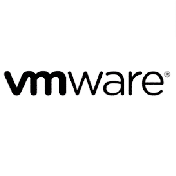Seminarinhalt
Programm
- Architektur der Grid Infrastruktur Clusterware
- Cluster Services und Management
- Node Monitoring
- Zeit Synchronisation
- Netzwerk Management und Virtuelle IP Adressen
- GNS - Grid Naming Services und Server Plug and Play
- SCAN - Single Client Access Name - Listener
- Shared Storage: SAN, iSCSI oder NAS (NFS)
- Oracle ASMlib und AFD - ASM Filter Driver
- Cluster Registry inklusive Backup und Restore
- CSS Voting Disks
- Cluster Arten: Standalone, Flex, Member und Domain sowie Extended Cluster
- Oracle 18c, 19c und 21c Neuheiten
- Cluvfy - Cluster Verification Utility
- Installation der Grid Infrastruktur
- Patching der Grid Infrastruktur während und nach der Installation
- GIMR - Grid Infrastruktur Management Repository
- Cluster Interconnect und ASM Netzwerk
- Update der Grid Infrastruktur
- Erweitern und verkleinern von Clustern um weitere Knoten
- Cluster Administration mit crsctl und srvctl
- Server Pool und Policies
- Administrationstools: olsnodes, ocrcheck, ocrconfig, oifcfg
- Clusterware High Availability Services
- Einbinden von 3rd Party Applikationen als Cluster Service
- Application VIPs - Virtuelle IP Adressen
- Oracle Enterprise Manager Cloud Control Integration
- HA Events und ONS - Oracle Notification Service
- Troubleshooting und Cluster Check und Health Tools
- TFA - Trace File Analyzer
Kursenvironment:
Dieser Workshop ist als In-House Workshop konzipiert, kann aber auch auf virtuellen Servern durchgeführt werden, da die Grid Infrastruktur inkl. ASM lizenzfreie Produkte sind. Allerdings darf man Oracle Patches nur dann nutzen, wenn man eine aktiven Wartungsvertrag für ein Oracle Betriebssystem (Linux oder Solaris) oder ein, durch die Grid Infrastruktur hochverfügbar gemachte, kostenpflichtige Oracle Softwarelösung, besitzt. Die Lizenzierung und die Sicherstellung eines aktiven Wartungsvertrages obliegt dem Endkunden.



